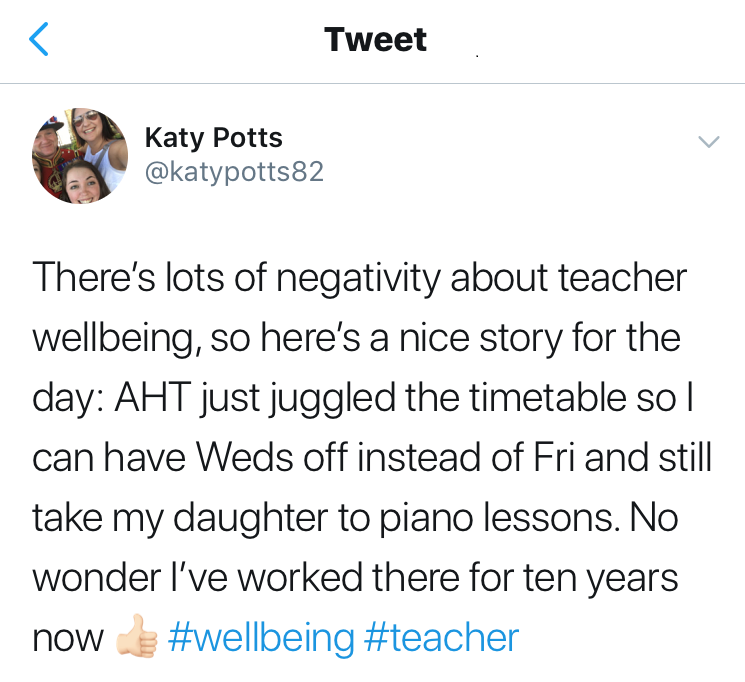
The response from staff is hugely appreciative; a tweet from one teacher about the school’s approach to her request went viral in 2019.

Who says schools can only accommodate a few part-time teachers? Not Huntington School, where the flexible, people-first culture has led to a miniscule 7% staff turnover rate.

The statistics around teaching staff shortages are well known, but they bear repeating. Data from the NFER has indicated that targets for the required number of secondary school trainees have been missed for seven years in a row, and 33% of state school NQTs leave within five years. And while the Covid-19 crisis appears to have triggered a spike in graduate teacher training applications, it’s too early to say whether this will deliver sustainable growth.
Yet it is possible to buck these trends. There are a number of schools who are managing to hold on to their experienced staff at far higher rates than others. Step forward Huntington School, a community secondary in York, which has a miniscule staff turnover rate of 7%. Around half of teachers work part-time – including members of SLT – on contracts ranging from 0.2 to 0.8 FTE, and there are several job shares.
So, what’s the secret? According to Headteacher John Tomsett, it’s all about the culture. John’s philosophy is that good schools don’t just pop up overnight; they grow over time out of a supportive culture, led by the leadership, that guides the school’s vision in the right direction.
In practice, at Huntington School, this means busting the myth that part-time teachers have a negative impact on students, and that the timetable can only accommodate a few part-time jobs. It means understanding that happy teachers stay, and that supporting the other aspects of their lives allows a school to get the best out of them. And it means taking a positive, proactive approach to flexible working, with a process built on the presumption that “We will make it work.”

The response from staff is hugely appreciative; a tweet from one teacher about the school’s approach to her request went viral in 2019.
Now clearly, this isn’t easy to achieve. It takes time, and it requires resource. But when the right elements are in place, the impact on people and the process is extraordinary. Here are three factors that make the Huntington model work so well.
The impact of all this is clear from the figures, with the school having retention rates that others can only dream of. And it’s equally clear from the staff response, like this one sent in May 2020:
“I just wanted to say a huge thank you for sorting out my timetable requests for next year. I don’t know how you have managed it! I really appreciate the efforts that must have gone into making this work and am certain this will make next year much more manageable as a result.”
With this level of appreciation, it’s no surprise that Huntington’s experienced staff are keen to stay, and that others are eager to join them; the school is once again fully staffed for 2020-21.
As John says, “I can’t make the job easier, but I can make doing the job easier.” If the Huntington model was replicated nationwide, would the teacher retention crisis become a thing of the past?
Published September 2020